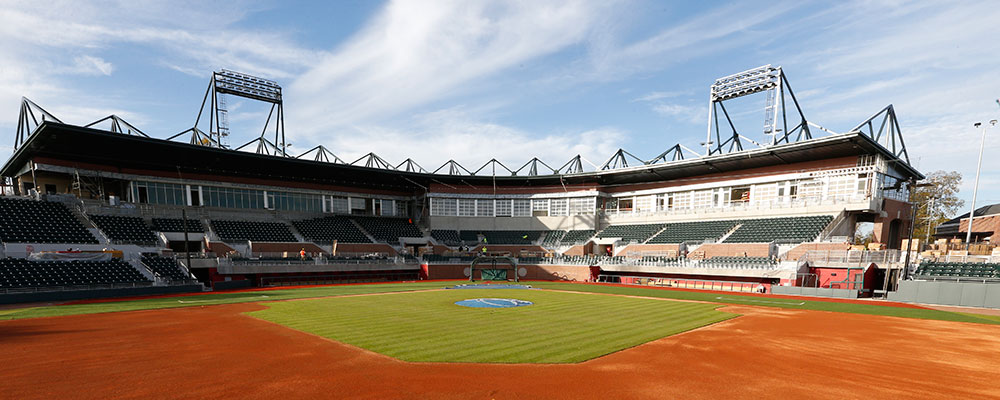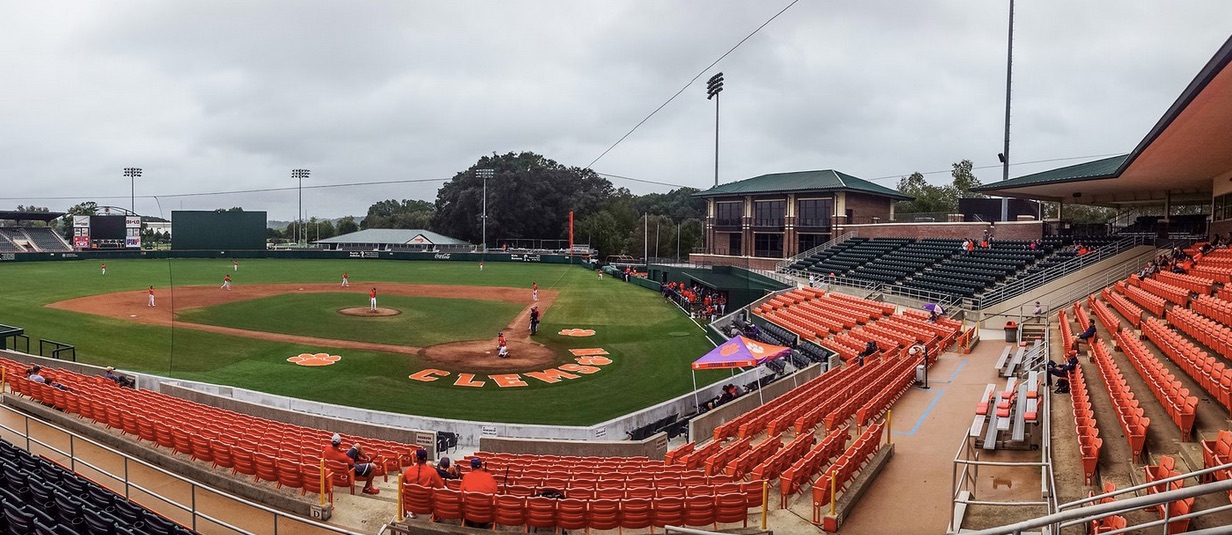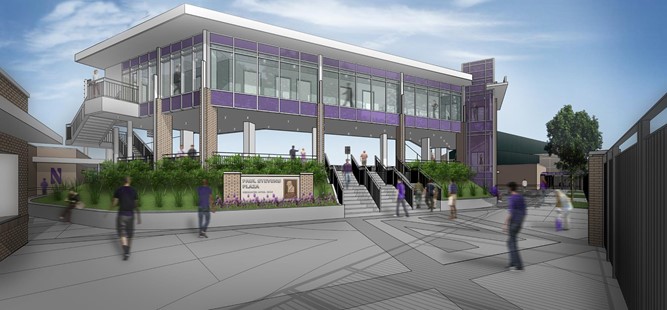This spring will mark the opening of several new and/or renovated ballparks around NCAA Division I College Baseball. Across the country, these overhauled facilities will introduce major changes that will alter the college baseball experience for fans and players alike, as these newly christened venues range from a sweeping changes to a historic ballpark to state-of-the-art amenities aimed at improving the viability of several programs.
To provide insight on these changes, Ballpark Digest is rolling out a two-part college ballpark preview series. Part one will look closely at the major overhauls that will significantly affect the fan and player experience. Part two, which will run next week, is slated to look at upgrades such as clubhouses and administrative builds, new fields and videoboards.
Leading off our overview of these new facilities is the major renovation to Sewell-Thomas Stadium, home to the University of Alabama Crimson Tide (shown above; courtesy University of Alabama). As part of a $42.6-million overhaul, the Crimson Tide constructed plenty of player amenities, highlighted by a 7,500-square-foot indoor training center that includes batting cages and spaces for year-round training. The overhauled Sewell-Thomas Stadium will also feature a brand new playing surface, as well as new bullpens.
Of course, the renovations would not have been complete without enhancements for the Crimson Tide faithful, and the program was sure to modernize several areas of the stadium. With a seating capacity of 5,500, the ballpark will feature ticket options ranging from premium suite and club areas, to grass berms. In all, Sewell-Thomas Stadium will feature 12 suites plus two exclusive areas-the .525 Club and the Home Plate Club.
The grandstand includes new seats and additional shade, while a picnic plaza and a grass berm will be included down the left field line. Connecting the rest of the outfield amenities — including a large grass terrace section in right field and a playground in left-center — will be a new 360-degree concourse. The new walkway will not only give fans the option to see the action from multiple viewpoints, but allow for better egress around the ballpark. Spectators will be able to purchase tickets, as well as enter and exit the stadium, from either the main entrance gates along the first base side, or via the outfield gate behind the center field wall. Students will also have their own gate, which is located in the right field.
Sewell-Thomas Stadium first opened as Thomas Field in 1948 and has not been upgraded since a $4-million, multi-phase renovation that began in 1999 and lasted until the beginning of the 2001 season. To ensure that the latest changes were completed in time for this season, the Crimson Tide played their 2015 home slate at Hoover Metropolitan Stadium, home to the annual SEC Baseball Tournament.
Elsewhere, the Clemson Tigers are about to embark on a new era at Doug Kingsmore Stadium (shown above; photo courtesy Clemson University). The ballpark features a brand new, three-level brick building on the first-base side that houses several player amenities, including a clubhouse, dining room, and training area.
While other changes, such as meeting space, were made to improve the program operations, the building will have an effect on the fan experience. As part of the project, the Tigers added 150 seats to the ballpark, which was accomplished by moving both dugouts closer to the action. Furthermore, the building will house the Kingsmore Museum, a space that honors the program’s history. Much of the construction for this project took place over last season, so 2016 will bring an end to the wait for both Tigers players and fans.
The upgrades across the college baseball landscape do not stop there, as there are several other facilities that have received significant overhauls. One of the more notable debuts this season will be the additions to Ball State Baseball Diamond, home of the Ball State Cardinals. This year, the stadium will feature a new grandstand that includes upgraded seating options and press areas. Most of the seating in the grandstand is of the bench-style bleacher variety, though there are an additional 60 fold-down stadium seats included. Ball State, which has significantly overhauled both its baseball and softball facilities over the past several years, has said it could make even more improvements in the future.
The Nichols State Colonels have made some big changes to Ray E. Didier Field. This season will bring about the first part of a roughly $5-million two-phase renovation, with most of the upgrades intended to improve the fan experience. Among the changes that will be seen in 2016 include an overhauled press box, the addition of a concession stand, as well as a hospitality suite. For the on-field aspect, the Colonels have upgraded both the playing surface and the ballpark lighting. Phase II, which is slated to begin after this season, will include, among other changes, a new clubhouse, batting cage, and main entrance.
At Northwestern University, the Wildcats will commence new upgrades to Rocky & Bernice Miller Park. The ballpark will feature several new amenities, such as an elevated and expanded press box that provides 2,300 square feet of space dedicated to an executive suite and upgraded conditions for the working media. Fans will be treated to new chair-back seats, plus two buildings that will each house several amenities. The largest of those structures spans 1,100 square feet, and contains a women’s restroom and several ticket windows, while a separate 1,000 square foot space hosts a men’s restroom and a concession area. A walkway named Stevens Plaza will also be added to the ballpark.
For the Wildcats players, Rocky & Bernice Miller Park will have a different look and feel this year, thanks to new clubhouse and lounge areas. Rocky & Bernice Miller Park first opened in 1943 and has been undergoing renovations since the end of the 2014 season, with the first projects centered on a new field and other player amenities. Northwestern has made it a priority to modernize the stadium, which had not received a significant overhaul since 1983.
One last ballpark project to profile comes from the University of San Francisco, which is working to expand and improve the Dante Benedetti Diamond at Max Ulrich Field. The facility, which first opened in 1953, is being largely rebuilt, as the field — which will now be FieldTurf — is being reoriented and lowered by 18 inches, requiring the construction of new dugouts.
Fans, meanwhile, will be given new concessions and ticketing areas. These projects represent phase one of a two-part project. The final stage, which will begin at a later, unannounced date, will bring about some sweeping additions, including new clubhouse and office space, plus a new press area, and upgraded seating options.
For college baseball fans in any part of the country, 2016 looks like a solid year for new and renovated college ballparks. Remember to check back next week, when we take a closer look at some of the smaller, but still noteworthy fan and player enhancements that will take place at other facilities.
This article first appeared in the Ballpark Digest newsletter. Are you a subscriber? Sign up here!



